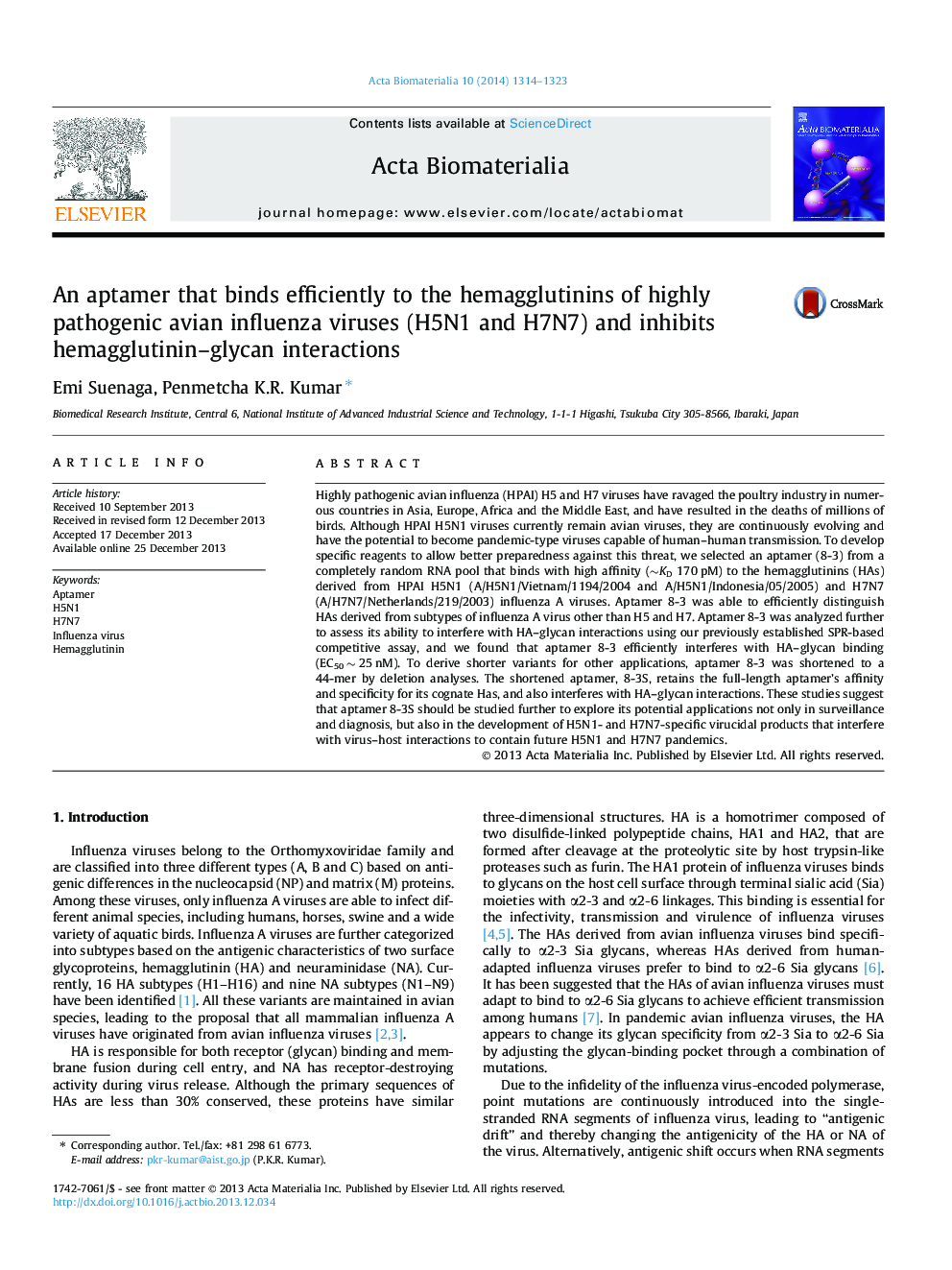| کد مقاله | کد نشریه | سال انتشار | مقاله انگلیسی | نسخه تمام متن |
|---|---|---|---|---|
| 10159282 | 41 | 2014 | 10 صفحه PDF | دانلود رایگان |
عنوان انگلیسی مقاله ISI
An aptamer that binds efficiently to the hemagglutinins of highly pathogenic avian influenza viruses (H5N1 and H7N7) and inhibits hemagglutinin-glycan interactions
دانلود مقاله + سفارش ترجمه
دانلود مقاله ISI انگلیسی
رایگان برای ایرانیان
موضوعات مرتبط
مهندسی و علوم پایه
مهندسی شیمی
بیو مهندسی (مهندسی زیستی)
پیش نمایش صفحه اول مقاله

چکیده انگلیسی
Highly pathogenic avian influenza (HPAI) H5 and H7 viruses have ravaged the poultry industry in numerous countries in Asia, Europe, Africa and the Middle East, and have resulted in the deaths of millions of birds. Although HPAI H5N1 viruses currently remain avian viruses, they are continuously evolving and have the potential to become pandemic-type viruses capable of human-human transmission. To develop specific reagents to allow better preparedness against this threat, we selected an aptamer (8-3) from a completely random RNA pool that binds with high affinity (â¼KD 170 pM) to the hemagglutinins (HAs) derived from HPAI H5N1 (A/H5N1/Vietnam/1194/2004 and A/H5N1/Indonesia/05/2005) and H7N7 (A/H7N7/Netherlands/219/2003) influenza A viruses. Aptamer 8-3 was able to efficiently distinguish HAs derived from subtypes of influenza A virus other than H5 and H7. Aptamer 8-3 was analyzed further to assess its ability to interfere with HA-glycan interactions using our previously established SPR-based competitive assay, and we found that aptamer 8-3 efficiently interferes with HA-glycan binding (EC50 â¼Â 25 nM). To derive shorter variants for other applications, aptamer 8-3 was shortened to a 44-mer by deletion analyses. The shortened aptamer, 8-3S, retains the full-length aptamer's affinity and specificity for its cognate Has, and also interferes with HA-glycan interactions. These studies suggest that aptamer 8-3S should be studied further to explore its potential applications not only in surveillance and diagnosis, but also in the development of H5N1- and H7N7-specific virucidal products that interfere with virus-host interactions to contain future H5N1 and H7N7 pandemics.
ناشر
Database: Elsevier - ScienceDirect (ساینس دایرکت)
Journal: Acta Biomaterialia - Volume 10, Issue 3, March 2014, Pages 1314-1323
Journal: Acta Biomaterialia - Volume 10, Issue 3, March 2014, Pages 1314-1323
نویسندگان
Emi Suenaga, Penmetcha K.R. Kumar,